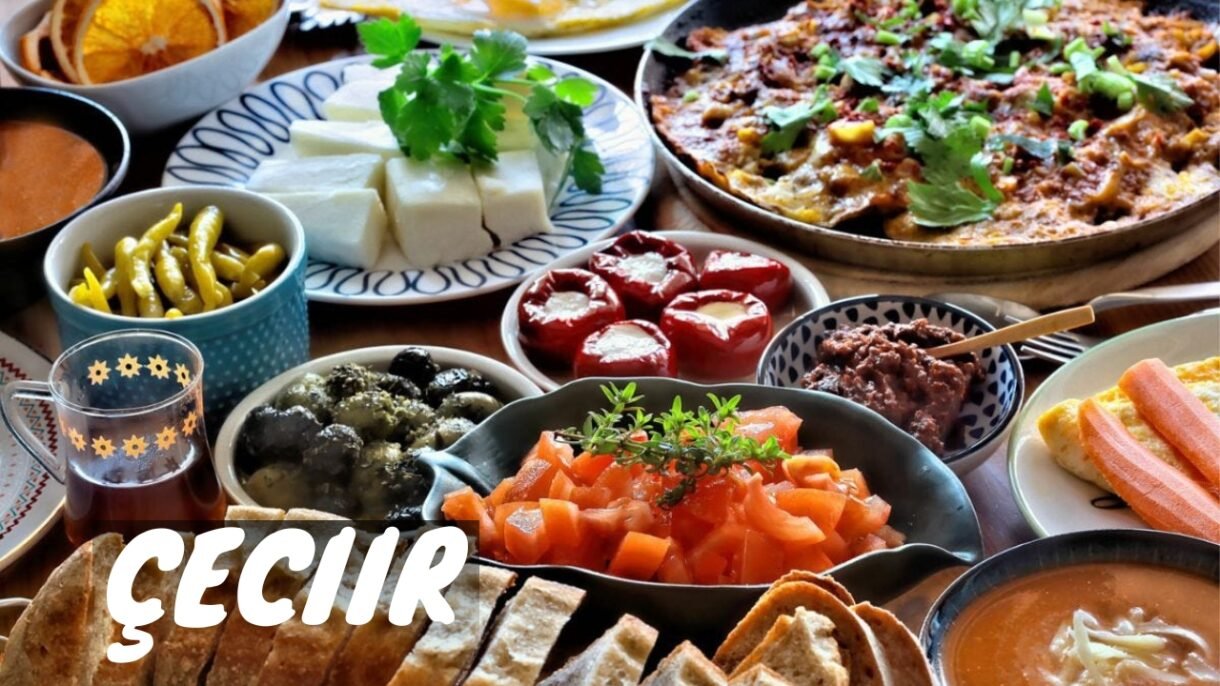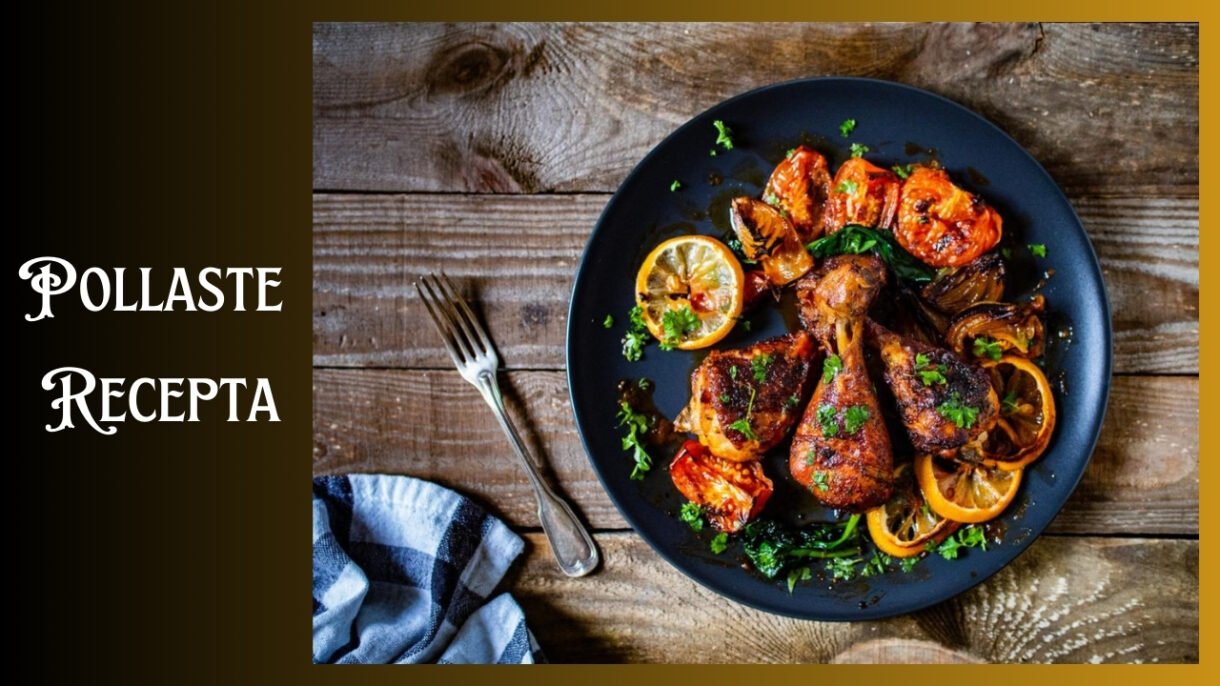Food
Exploring the Varieties of Çeciir: A Comprehensive Guide

Encountering Çeciir is like discovering an old, treasured manuscript full of unknown tales, revealing savory stories wrapped in spice and cultural heritage. This enigmatic word encapsulates a world as rich as its flavors and as diverse as the hands crafting it. Journey with us as we peel back the layers of Çeciir, exploring its roots, its taste, and the cultural customs that continue to make it an essential element of a vibrant community.
A Brief Overview of Çeciir
Çeciir isn’t just a spice or a dish—it’s an ethos, a celebration, a way of life. Its roots reach deep into the history of a people, its name whispered through the corridors of time. Derived from the local dialects of its birthplace, the word embodies the spirit of the land — where agriculture meets tradition, and each family has a signature way of honoring their heritage on the plate.
In a culinary sense, Çeciir is versatile, finding its way into everything from slow-cooked stews to fragrant pilafs. But it’s not just the taste that sets it apart. This seasoning is a testament to the pride of a community, the skills passed down over generations, and the love that’s ladled out into serving bowls each day.
The History of Çeciir
To truly understand Çeciir, we must take a step back in time. Back to when recipes were passed down orally, when travel could mean a day’s walk to a neighboring village, and when a land’s bounty was treasured like gold. The history of Çeciir is not just regional; it’s cultural. Each grain of this condiment signifies a story, sometimes of hardship, and often, of innovation.
Historically, the spice was used for its preservative qualities, extending the life of meats and grains. It was a staple for many during times of scarcity, celebrated for not just adding flavor but for its practical value in the kitchen. Today, we see a transformation of its use, from essential to versatile, as modern chefs blend tradition with the demands of a contemporary palate.
Çeciir in Cuisine
When we speak of Çeciir in cuisine, we’re not just talking about one dish or a set recipe. We’re discussing a multitude of possibilities, a myriad of aromas, and a spectrum of textures. A pinch of Çeciir can transform a mundane meal into a memorable one, turning the ordinary into the extraordinary.
Main Dishes
Steeped in history, Çeciir lends its robust, earthy undertones to a variety of main courses. From tender lamb marinated in its aromatic rub to hearty lentil stews simmered with this signature blend, it deepens the complexity of flavors and enriches the dining experience.
Snacks and Appetizers
It’s not uncommon to find Çeciir sprinkled onto freshly baked bread or encrusting bite-sized treats. It provides a delightful crunch to snacks, a mix of warmth and spice that makes them irresistible as morsels at social gatherings or as indulgences savored alone.
Desserts and Drinks
In a fusion of sweet and savory, Çeciir sometimes finds its way into desserts, offering a surprising twist to the final course. And in a warm brewed beverage, it acts as an unexpected yet delightful companion, caressing the senses with notes both bitter and sweet.
Regional Variations
What’s intriguing about Çeciir is its chameleon-like ability to adapt to the nuances of the region. No two places prepare it quite the same way, and so the experience of Çeciir is as varied as the landscape of the land where it’s found.
Northern Recipes
In the north, Çeciir might be the star of a dish, holding its own against rich game meats or slow-cooked legumes. It’s likely to be grounded to a fine powder, ensuring a consistency that allows it to blend seamlessly into thick broths and bean dishes.
Southern Style
Travel south, and you may find Çeciir taking on a different persona. Here, it might be coarser, with whole spices adding depth and texture. Or perhaps it’s been mixed with other local ingredients unique to the terrain, creating a mosaic of flavors that reflects the vibrancy of the coastal culture.
Coastal Cuisines
Coasts boast their own culinary tapestries, often featuring the freshest seafood combined with pastoral produce. Alongside these, Çeciir adds an anchor of boldness, a gust of brine that respects the sea’s bounties and complements them perfectly.
Beyond the Plate
Çeciir extends beyond the act of eating, intertwining itself into the very fabric of the culture. It brings communities together, signifies the change of the seasons, and bestows its warmth upon the homes where it’s cooked.
Festivals and Feasts
During festivals and celebratory feasts, Çeciir marks the passage of time, encapsulating the essence of the occasion. It symbolizes abundance, unity, and the continuity of tradition, speaking volumes without uttering a single word.
Rituals and Rites
In more somber moments, such as funerals or remembrance ceremonies, food seasoned with Çeciir is comfort served on a plate. It’s a tangible expression of love, respect, and the solace found in familiar tastes, a sanctuary in times of sorrow.
Daily Life
In the ordinary days, Çeciir is a daily companion, a part of the rhythm that shapes daily life. Meals seasoned with it are a salutation to the start of a new day, a fitting reward after toil, a balm for the heart, and a binding agent for families that gather around the table.
Where to Experience Çeciir
For those intrigued by the tales of Çeciir and eager to partake in its delights, there are destinations waiting to be discovered. Markets bustling with life offer a glimpse into the past and present of this spice, while eateries beckon with the promise of a unique taste of tradition.
Culinary Tours
Culinary tours are an ideal way to immerse oneself in the world of Çeciir. Guides will lead you through the labyrinth of local markets, introduce you to the vendors who are keepers of the spice, and share with you the stories behind the recipes.
Cultural Events
Don’t miss the chance to attend cultural events where Çeciir is the guest of honor. These gatherings are a gateway to understanding the customs and rituals associated with the spice, providing insight into the depth of its cultural significance.
Local Restaurants
Finally, nothing quite captures the essence of Çeciir like a meal at a local restaurant. Here, you’ll taste the history, the innovation, and the heart that goes into every dish. From rustic family-run establishments to trend-setting urban eateries, the variety is as vast as the spice’s potential.
Conclusion
In a world that sometimes seems to rush towards the new and the novel, Çeciir stands as a testament to the enduring power of tradition. Its story is the story of a people, resilient and resourceful, vibrant and varied. Its place in cuisine is not just about taste, but about the connection it fosters, the memories it elicits, and the pride it instills.
The next time you sit down to a meal spiced with Çeciir, take a moment to appreciate the layers of history and culture on your plate. Recognize that what you’re savoring isn’t just a dish—it’s a legacy, lovingly preserved and proudly shared. And in that act of recognition, may you find a deeper, more delicious understanding of the many layers of Çeciir.
Frequently Asked Questions
What is Çeciir?
Çeciir is a distinctive spice blend known for its unique flavor profile that combines earthy undertones with a warm and slightly spicy kick. It is used in a variety of dishes, from main courses and appetizers to desserts and drinks, enhancing the complexity and depth of flavors.
How is Çeciir used in cooking?
Çeciir is versatile in its use; it can be rubbed onto meats, sprinkled onto bread and snacks, simmered in stews, or even added to desserts and beverages. Its use varies widely across regions, adapting to local tastes and ingredients to create dishes that reflect the cultural and culinary heritage of the area.
Are there regional variations of Çeciir?
Yes, Çeciir exhibits a rich diversity in its preparation and usage across different regions. Variations can be seen in the grind of the spice, from fine powders to coarser mixes, and in the combination with other local spices. This results in a spectrum of flavors, from bold and hearty in the north to vibrant and textured in the south and along the coasts.
Can Çeciir be found outside of its region of origin?
Çeciir can be explored outside its traditional locale through culinary tours, cultural events, and at local restaurants specializing in regional cuisine. Markets and specialized spice shops may also offer Çeciir, giving food enthusiasts the opportunity to experiment with its flavors in their cooking.
What is the cultural significance of Çeciir?
Beyond its culinary use, Çeciir holds profound cultural importance, symbolizing abundance, unity, and the continuity of tradition. It plays a prominent role in festivals, feasts, and even rituals, becoming a part of the community’s life. Çeciir is not just a spice but a celebration of culture, history, and shared experiences.
Food
Delicious Pollaste Recepta: A Traditional Chicken Recipe

In the vast world of culinary delights, few dishes capture the essence of tradition and comfort as beautifully as the Pollaste Recepta. This traditional chicken recipe has been passed down through generations, embodying the rich flavors and cultural heritage of its origins. Whether you’re a seasoned home cook or a culinary adventurer looking to explore new dishes, the Pollaste Recepta promises a delightful journey into the heart of authentic cuisine.
In this blog post, we will delve into the history and cultural significance of Pollaste Recepta, explore the essential ingredients that make it so special, and provide you with a step-by-step cooking guide to recreate this delicious dish in your own kitchen. We’ll also discuss variations, health benefits, and serving suggestions to enhance your experience. So, grab your apron and get ready to embark on a flavorful adventure with Pollaste Recepta!
The History and Cultural Significance of Pollaste Recepta
Pollaste Recepta, which translates to “chicken recipe” in Catalan, hails from the rich culinary traditions of Catalonia, a region in northeastern Spain known for its diverse and flavorful cuisine. Catalonia boasts a unique blend of Mediterranean influences, with ingredients like olive oil, garlic, and fresh herbs playing a central role in its dishes. Pollaste Recepta is a testament to the Catalan commitment to using fresh, local ingredients to create dishes that are both hearty and full of flavor.
The origins of Pollaste Recepta can be traced back to Catalan families who would prepare this dish for special occasions and family gatherings. It was often served during festive celebrations, holidays, and Sunday family lunches, making it a cherished part of Catalan culinary heritage. The recipe has been passed down through generations, with each family adding their own unique touch to the dish.
At its core, Pollaste Recepta represents the essence of Catalan cooking: simplicity, authenticity, and a deep connection to the land and its produce. By learning to prepare this dish, you’re not only savoring a delicious meal but also honoring a rich cultural tradition that has stood the test of time.
Ingredients and Their Roles in Creating the Perfect Dish
The success of Pollaste Recepta lies in its carefully selected ingredients, each contributing to the dish’s overall flavor and texture. Here are the key components you’ll need to create the perfect Pollaste Recepta:
Chicken
The star of the show, chicken forms the foundation of Pollaste Recepta. Opt for free-range or organic chicken if possible, as it tends to have a richer flavor and better texture. Traditionally, a whole chicken is used, but you can also use chicken thighs or drumsticks for convenience.
Olive Oil
Olive oil is a staple in Catalan cuisine, known for its fruity and robust flavor. It’s used for both marinating the chicken and sautéing the aromatics, infusing the dish with a distinct Mediterranean touch.
Garlic
Garlic is a key ingredient that provides depth and aroma to the dish. It’s sautéed until golden, releasing its natural sweetness and enhancing the overall flavor profile.
Tomatoes
Fresh, ripe tomatoes are used to create a rich and savory sauce. They add a natural sweetness and acidity that balances the dish perfectly.
Onions
Onions add a subtle sweetness and texture to the sauce. When caramelized, they impart a rich, savory flavor that complements the other ingredients.
White Wine
White wine adds complexity and depth to the sauce, enhancing the flavors of the chicken and other ingredients. It also helps to tenderize the meat, ensuring a succulent and juicy result.
Bay Leaves and Fresh Herbs
Bay leaves and fresh herbs like thyme and rosemary infuse the dish with an aromatic quality that elevates the overall experience. These herbs are a hallmark of Mediterranean cuisine, adding a fragrant and earthy dimension.
Salt and Pepper
Simple yet essential, salt and pepper season the dish to perfection, enhancing the natural flavors of the ingredients without overpowering them.
Optional: Saffron
For an extra touch of luxury, saffron can be added to the dish. This prized spice imparts a golden hue and a unique, delicate flavor that enhances the overall richness.
Step-by-Step Cooking Guide with Tips for Flawless Execution
Creating the perfect Pollaste Recepta requires attention to detail and a bit of patience. Follow this step-by-step guide to achieve a flawless result every time:
Preparation
Gather Your Ingredients: Ensure you have all the necessary ingredients on hand before you start cooking. This includes the chicken, olive oil, garlic, tomatoes, onions, white wine, bay leaves, fresh herbs, salt, pepper, and saffron (if using).
Marinate the Chicken: In a large bowl, season the chicken pieces with salt and pepper. Drizzle them with olive oil and let them marinate for at least 30 minutes. This step helps to infuse the chicken with flavor and ensures a juicy result.
Sauté the Aromatics
Heat the Olive Oil: In a large, heavy-bottomed pot or Dutch oven, heat a generous amount of olive oil over medium heat.
Sauté the Garlic: Add the minced garlic to the pot and sauté until golden and fragrant. Be careful not to burn the garlic, as it can turn bitter.
Add the Onions: Add the finely chopped onions to the pot and sauté until they become soft and translucent. This step helps to build the base of the sauce.
Incorporate the Tomatoes: Add the chopped tomatoes to the pot and cook until they break down and form a thick, rich sauce. This may take about 10-15 minutes. Stir occasionally to prevent sticking.
Cook the Chicken
Add the Chicken: Place the marinated chicken pieces into the pot, nestling them into the sauce. Allow the chicken to brown slightly on all sides, enhancing the flavor.
Deglaze with White Wine: Pour in the white wine, scraping up any browned bits from the bottom of the pot. This step adds depth and complexity to the sauce.
Add Bay Leaves and Herbs: Toss in the bay leaves and fresh herbs, infusing the dish with aromatic goodness.
Simmer and Cook: Reduce the heat to low, cover the pot, and let the chicken simmer gently for about 45 minutes to an hour. This slow cooking process ensures that the chicken becomes tender and absorbs the flavors of the sauce.
Final Touches
Check for Seasoning: Taste the sauce and adjust the seasoning with salt and pepper as needed.
Optional: Add Saffron: If using saffron, dissolve a few strands in warm water and add it to the pot. Allow it to infuse for a few minutes before serving.
Serve and Enjoy: Once the chicken is fully cooked and the flavors have melded together, remove the pot from the heat. Serve the Pollaste Recepta hot, garnished with fresh herbs.
Variations and Customizations for Personal Taste
One of the beauties of Pollaste Recepta is its versatility. While the traditional recipe is a classic, there are several variations and customizations you can explore to suit your personal taste:
Citrus Infusion
For a refreshing twist, add a splash of freshly squeezed lemon or orange juice to the sauce. The citrusy notes complement the savory flavors and add a bright, tangy dimension.
Spicy Kick
If you enjoy a bit of heat, consider adding a pinch of red pepper flakes or a diced chili pepper to the sauce. This adds a subtle spiciness that enhances the overall flavor.
Mediterranean Twist
Incorporate additional Mediterranean ingredients like olives, capers, or roasted red peppers into the sauce. These ingredients add complexity and richness to the dish.
Herbaceous Delight
Experiment with different herbs to create unique flavor profiles. Basil, oregano, and parsley are excellent options that can be used to enhance the dish’s aromatic qualities.
Rich and Creamy
For a richer version, stir in a dollop of heavy cream or crème fraîche just before serving. This adds a luxurious creaminess that elevates the dish to new heights.
Vegetarian Option
If you prefer a vegetarian version, replace the chicken with hearty vegetables like eggplant, zucchini, and bell peppers. The vegetables will absorb the flavors of the sauce beautifully, creating a satisfying meatless option.
Health Benefits and Nutritional Information
Pollaste Recepta is not only delicious but also offers several health benefits, making it a wholesome addition to your diet:
High-Quality Protein
Chicken is an excellent source of high-quality protein, which is essential for muscle growth, repair, and overall health. Protein also helps to keep you feeling full and satisfied.
Rich in Vitamins and Minerals
The ingredients in Pollaste Recepta, such as tomatoes, garlic, and onions, are rich in vitamins and minerals like vitamin C, vitamin A, potassium, and antioxidants. These nutrients support immune function, promote healthy skin, and reduce inflammation.
Healthy Fats
Olive oil, a key component of the dish, is a source of healthy monounsaturated fats. These fats are known to support heart health, reduce bad cholesterol levels, and provide anti-inflammatory benefits.
Low in Carbohydrates
Pollaste Recepta is naturally low in carbohydrates, making it a suitable option for those following low-carb or keto diets. It can be enjoyed with a variety of side dishes to create a balanced meal.
Nutritional Information (per serving)
- Calories: 350-400
- Protein: 25-30 grams
- Fat: 20-25 grams
- Carbohydrates: 10-15 grams
- Fiber: 2-3 grams
- Vitamins and Minerals: Rich in vitamin C, vitamin A, potassium, and antioxidants
Serving Suggestions and Pairings
To fully enjoy Pollaste Recepta, consider pairing it with complementary side dishes and beverages. Here are some serving suggestions to elevate your dining experience:
Rice or Quinoa
Serve Pollaste Recepta over a bed of fluffy rice or quinoa to soak up the delicious sauce. The grains provide a neutral base that complements the flavors of the dish.
Crusty Bread
A loaf of crusty bread, such as a baguette or ciabatta, is perfect for sopping up the sauce. The combination of tender chicken and flavorful sauce with a crispy bread crust is simply irresistible.
Roasted Vegetables
Roasted vegetables like asparagus, carrots, or Brussels sprouts make a wonderful side dish. Their natural sweetness and caramelization add a delightful contrast to the savory chicken.
Green Salad
A fresh green salad with a light vinaigrette provides a refreshing contrast to the rich flavors of Pollaste Recepta. Consider adding ingredients like arugula, cherry tomatoes, and cucumbers for added crunch.
Sharing Stories: Reader Experiences and Feedback
We love hearing from our readers and encourage you to share your experiences and feedback after trying Pollaste Recepta. Did you make any customizations? How did your family and friends enjoy the dish? Feel free to leave comments below and share your culinary adventures with us!
Here are a few stories from fellow readers who have embraced the magic of Pollaste Recepta:
Maria’s Family Tradition
“Pollaste Recepta has become a beloved dish in our household. It’s a recipe that brings back fond memories of Sunday lunches with my grandparents. We love adding a touch of saffron for that extra special touch. Thank you for sharing this wonderful recipe!”
David’s Culinary Adventure
“As a culinary enthusiast, I’m always on the lookout for traditional recipes. Pollaste Recepta did not disappoint! The flavors were incredible, and the cooking process was so rewarding. I added some olives and capers for a Mediterranean twist, and it turned out amazing.”
Sarah’s Healthy Twist
“I wanted to create a lighter version of Pollaste Recepta, so I used chicken breast and added a lot of fresh herbs. The result was a beautifully fragrant and healthy dish that my whole family enjoyed. Thank you for the inspiration!”
Conclusion:
Pollaste Recepta is more than just a chicken recipe; it’s a culinary journey that connects us to the rich traditions and flavors of Catalonia. Its timeless appeal lies in its simplicity, authenticity, and the genuine love that goes into preparing it.
Whether you’re savoring this dish with family and friends or embarking on a solo culinary adventure, Pollaste Recepta promises a memorable and satisfying experience. We hope this guide has inspired you to embrace the magic of this traditional chicken recipe and make it a cherished part of your culinary repertoire.
Thank you for joining us on this flavorful journey. We look forward to hearing about your own experiences with Pollaste Recepta and sharing in the joy of creating delicious memories together.
Frequently Asked Questions
What is Pollaste Recepta?
Pollaste Recepta is a traditional Catalan chicken recipe known for its rich and flavorful sauce made with ingredients like tomatoes, garlic, onions, and olive oil. It offers a delicious way to enjoy high-quality protein while also benefiting from a variety of vitamins, minerals, and healthy fats.
Can Pollaste Recepta be made vegetarian or vegan?
Yes, Pollaste Recepta can be adapted to a vegetarian or vegan version by substituting the chicken with hearty vegetables such as eggplant, zucchini, and bell peppers. For a vegan option, ensure all other ingredients, including oil and spices, are plant-based.
How can I make Pollaste Recepta healthier?
You can make Pollaste Recepta healthier by using leaner chicken parts like chicken breast and incorporating more fresh herbs for added flavor. Reducing the amount of oil and opting for low-sodium canned tomatoes can also help make the dish lighter.
What are the best side dishes to pair with Pollaste Recepta?
Pollaste Recepta pairs well with a variety of side dishes such as fluffy rice, quinoa, crusty bread, roasted vegetables, and green salads. These sides help soak up the delicious sauce and complement the rich flavors of the dish.
Can Pollaste Recepta be reheated?
Yes, Pollaste Recepta can be reheated. It is best to store the dish in an airtight container in the refrigerator for up to 3 days. To reheat, gently warm it on the stove over low heat, stirring occasionally to ensure even heating. Alternatively, you can reheat it in a microwave-safe dish at medium power until thoroughly warmed.
Food
Explore Gelamento: A Journey of Flavors and Fun!

Italy is renowned for its rich culinary heritage, with each region offering unique and delectable dishes. Among these, gelato holds a special place in the hearts of food lovers worldwide. However, there is another Italian frozen treat that deserves just as much attention gelamento. While gelato has carved out its niche in the world of desserts, gelamento is an emerging culinary delight that offers a fresh take on Italy’s tradition of frozen treats.
What is Gelamento?
Gelamento is a fusion of traditional gelato and innovative culinary techniques, resulting in a dessert that is both familiar and novel. It retains the creamy, dense texture of gelato but introduces new flavors, ingredients, and methods of preparation that elevate it to a whole new level. In essence, gelamento is gelato reimagined for a modern audience.
The Importance of Gelamento in Italian Cuisine
Gelamento represents the evolution of Italian desserts, showcasing the country’s ability to innovate while preserving its culinary roots. It’s a testament to Italy’s commitment to quality and creativity in the kitchen, making it a must-try for anyone passionate about food.
A Taste of Italy: Regional Variations and Local Favorites
Just like gelato, gelamento varies significantly from one Italian region to another. Each area brings its unique touch to this frozen delight, influenced by local ingredients and culinary traditions.
Northern Italy
In Northern Italy, gelamento often features flavors that reflect the region’s love for dairy and nuts. Think hazelnut, chestnut, and mascarpone. The cooler climate also means that gelamento here tends to be a bit richer and creamier.
Central Italy
Central Italy, particularly Tuscany and Umbria, is known for its use of seasonal fruits and local wines. You’ll find gelamento flavored with figs, grapes, and even a hint of Chianti. These gelamentos are often lighter, focusing on the natural sweetness of the fruits.
Southern Italy
In the warmer regions of Southern Italy, gelamento takes on a more refreshing character. Citrus fruits like lemons and oranges are popular, as are tropical flavors like mango and papaya. The use of fresh, local fruits makes Southern Italian gelamento a perfect treat for hot summer days.
Islands of Italy
The islands of Sicily and Sardinia offer their unique takes on gelamento. In Sicily, expect bold flavors like pistachio and almond, while Sardinia might surprise you with its use of local herbs and honey.
The Art of Making Gelamento: Insights into the Churning Process
Creating gelamento is an art form that requires skill, patience, and a deep understanding of ingredients. The process is similar to making traditional gelato but with a few key differences that make gelamento stand out.
Ingredients Matter
The quality of ingredients is paramount in making gelamento. Fresh, local ingredients are preferred to ensure the best flavor. Milk, cream, and sugar form the base, but it’s the additional ingredients—fruits, nuts, chocolates, and herbs—that give gelamento its unique character.
The Churning Process
The churning process is where the magic happens. Unlike commercial ice cream, which is churned quickly to incorporate a lot of air, gelamento is churned slowly. This slow churning process results in a denser, creamier texture that is characteristic of gelato but taken to the next level in gelamento.
Temperature Control
Temperature control is crucial in the making of gelamento. The mixture is churned at a slightly warmer temperature than ice cream, which helps to create a smooth, velvety texture. It is then rapidly cooled to lock in the flavors and texture.
Innovative Gelamento Flavors: From Classic to Quirky Combinations
One of the most exciting aspects of gelamento is the endless possibilities for flavor combinations. While classic flavors like chocolate, vanilla, and strawberry are always popular, gelamento encourages experimentation and innovation.
Classic Flavors
- Vanilla Bean: Enhanced with real vanilla beans for an intense, aromatic experience.
- Dark Chocolate: Rich and indulgent, made with high-quality cocoa.
- Strawberry: Fresh and fruity, using locally sourced strawberries.
Innovative Flavors
- Lavender Honey: A delicate balance of floral lavender and sweet honey.
- Basil and Lemon: Refreshing and slightly savory, perfect for a hot day.
- Cinnamon and Fig: A warm and spicy combination that feels like a hug in a bowl.
Quirky Combinations
- Black Sesame and Miso: An umami-rich, nutty flavor that’s surprisingly addictive.
- Turmeric and Coconut: A golden-hued treat with anti-inflammatory benefits.
- Blue Cheese and Pear: A bold choice for adventurous eaters, combining savory and sweet elements.
Healthier Options: Vegan and Allergen-Free Gelamento
As dietary preferences and restrictions become more common, the world of gelamento has evolved to include options for everyone. Vegan and allergen-free gelamento are becoming increasingly popular, offering delicious alternatives without compromising on flavor or texture.
Vegan Gelamento
Traditional gelato relies heavily on dairy, but vegan gelamento uses plant-based alternatives like almond milk, coconut milk, and oat milk. These alternatives provide a creamy texture while accommodating those who avoid animal products.
Popular Vegan Flavors
- Coconut and Mango: Tropical and refreshing, made with coconut milk.
- Almond and Cherry: Nutty and fruity, using almond milk as the base.
- Chocolate Avocado: Rich and creamy, with avocado adding extra smoothness.
Allergen-Free Options
Creating allergen-free gelamento involves careful selection of ingredients to avoid common allergens like nuts, dairy, and gluten. The result is a treat that everyone can enjoy, regardless of dietary restrictions.
Popular Allergen-Free Flavors
- Lemon Sorbet: Zesty and refreshing, made without any dairy or nuts.
- Raspberry and Mint: A fresh and fruity combination that’s allergen-free.
- Caramel Apple: Sweet and tangy, made with safe, allergen-free ingredients.
Gelamento at Home: DIY Recipes and Tips
While enjoying gelamento at a local gelateria is a treat, making it at home can be just as rewarding. With a few simple ingredients and some patience, you can create your own gelamento masterpieces.
Basic Gelamento Recipe
Ingredients:
- 2 cups whole milk
- 1 cup heavy cream
- 3/4 cup sugar
- 1 tablespoon cornstarch
- 1 vanilla bean, split and scraped (or 1 tablespoon pure vanilla extract)
Instructions:
- Prepare the Base: In a medium saucepan, combine the milk, cream, and sugar. Heat over medium heat, stirring occasionally until the sugar dissolves.
- Thicken the Mixture: In a small bowl, mix the cornstarch with a few tablespoons of the milk mixture to create a slurry. Add the slurry to the saucepan and cook, stirring constantly, until the mixture thickens slightly.
- Infuse the Flavor: If using a vanilla bean, add it to the mixture now. If using vanilla extract, wait until after cooling. Remove from heat and let it cool to room temperature. If using vanilla extract, add it now.
- Churn the Gelamento: Pour the mixture into your ice cream maker and churn according to the manufacturer’s instructions.
- Freeze and Enjoy: Once churned, transfer the gelamento to a container and freeze for at least 2 hours before serving.
Tips for Perfect Gelamento
- Use Fresh Ingredients: The quality of your ingredients will directly impact the flavor of your gelamento.
- Don’t Over-Churn: Over-churning can introduce too much air, affecting the texture.
- Experiment with Flavors: Don’t be afraid to try new combinations and ingredients.
The Future of Gelamento: Trends and Innovations
The world of gelamento is constantly evolving, with new trends and innovations emerging regularly. Here are some exciting developments to look forward to:
Sustainable Practices
As consumers become more environmentally conscious, gelamento makers are adopting sustainable practices. This includes using locally sourced ingredients, eco-friendly packaging, and reducing waste during production.
Functional Ingredients
There is a growing interest in gelamento that offers health benefits beyond just being a tasty treat. Ingredients like probiotics, superfoods, and adaptogens are being incorporated to create gelamento that’s both delicious and nutritious.
Technology Integration
Advancements in technology are also making their way into the gelamento world. From AI-driven flavor development to high-tech churners that offer precise temperature control, technology is enhancing the way gelamento is made and enjoyed.
You May Also Like: Exploring Çebiti: A Taste of Turkish Elegance
Conclusion:
Gelamento is more than just a frozen treat; it’s a celebration of Italian culinary ingenuity and a testament to the endless possibilities of dessert-making. Whether you’re savoring a classic flavor or experimenting with a quirky combination, gelamento offers a delightful experience for all.
As you embark on your own gelamento journey, remember to embrace the creativity and passion that goes into every scoop. Whether you’re enjoying it at a local gelateria or making it at home, gelamento is a delicious reminder of the joys of culinary exploration.
So, what are you waiting for? Dive into the world of gelamento and discover the flavors, textures, and experiences that await. Buon appetito!
FAQs
What is Gelamento?
Gelamento is a delightful fusion between traditional gelato and contemporary dessert innovations. It is made using similar techniques to Italian gelato but often includes unique flavors and ingredients, including vegan and allergen-free options.
How is vegan gelamento made?
Vegan gelamento is crafted using plant-based milks such as almond milk, coconut milk, or oat milk as alternatives to dairy. These ingredients provide the creamy texture synonymous with traditional gelato while being completely animal product-free.
Can I make gelamento without an ice cream maker?
Yes, you can make gelamento without an ice cream maker by using a manual method. After preparing the mixture, place it in a shallow dish and freeze. Every 30 minutes, stir the mixture vigorously to break up ice crystals, repeating this process until the gelamento reaches the desired consistency.
Are there any health benefits to eating gelamento?
Yes, besides being a refreshing treat, gelamento made with certain ingredients can offer health benefits. For example, options that include fruits, nuts, or superfoods can provide antioxidants, vitamins, and minerals. Vegan and allergen-free varieties cater to specific dietary needs without compromising on taste or texture.
How can I incorporate sustainable practices into making gelamento at home?
To incorporate sustainable practices, start by sourcing ingredients locally to reduce your carbon footprint. Choose organic where possible, minimize waste by using reusable containers for storing gelamento, and compost any food scraps that result from the preparation process.
Food
Exploring the Piquant World of Spicyrranny: A Taste of Adventure

Welcome, culinary enthusiasts, to the ultimate guide for those who dare to explore the fiery depths of flavor. If your palate seeks adventures, thrilling your taste buds with every bite, then you’ve stumbled upon a treasure trove of spicy delights. Spicyrranny is not just a concept; it’s an experience crafted for those who find joy in the heat of the moment—quite literally. This post is dedicated to the daring, the foodies, and the spicy food lovers. Prepare to ignite your senses as we dive deep into the world of Spicyrranny.
The Science of Spiciness: Understanding the Heat
Before we savor the Spicyrranny menu, it’s essential to understand what makes spicy food, well, spicy. The culprit behind the heat is a compound called capsaicin, found in chili peppers, which triggers a reaction in the pain receptors in our mouths. But fear not, this “pain” is what many of us seek out, craving the endorphin rush that follows—a natural high that keeps us coming back for more.
Health Benefits of Spicy Foods
Apart from the adrenaline kick, spicy foods boast several health benefits. Regular consumption can boost metabolism, aiding in weight loss. They’re also known to improve digestion and contribute to heart health. The compound capsaicin has been studied for its anti-inflammatory properties, making that extra dash of hot sauce not just a flavor enhancer but a healthy habit.
The Spicyrranny Menu: A Journey Through Heat
Spicyrranny’s menu is a carefully curated selection of dishes that promise to test your limits while pleasing your palate. Each dish is a testament to the beauty of spice, from the mildly tangy to the tear-inducing levels of heat. Signature dishes include the “Blaze Trail Chili,” a hearty stew that incorporates a blend of the world’s hottest peppers, and the “Scorching Sichuan Noodles,” a dish that offers a numbing sensation followed by an intense wave of heat, characteristic of Sichuan cuisine.
Tips for Enjoying Spicy Foods
For novices and enthusiasts alike, there are ways to enhance your spicy food experience:
- Start Slow: Gradually increase the spice level in your food to build up your tolerance.
- Stay Hydrated: Drink plenty of water or milk to soothe the heat.
- Pair Wisely: Combine spicy dishes with bland, starchy foods like rice or bread to balance the flavors.
- Enjoy the Journey: Focus on the flavors accompanying the heat, appreciating the complexity of the dish.
Spicyrranny Around the World: A Spice Odyssey
Spicyrranny doesn’t limit its inspiration to one region. Our menu takes you on a global tour, from the robust spices of Indian curries to the zesty heat of Caribbean jerk seasoning. The beauty of spice is its universal appeal, transcending borders and bringing cultures together on a single plate. By exploring these diverse cuisines, Spicyrranny aims to educate and inspire, turning each meal into an adventure.
You May Also Like: Exploring Çebiti: A Taste of Turkish Elegance
Conclusion:
We invite you to step into the world of Spicyrranny, where every dish is a challenge and a delight. Whether you’re visiting one of our locations or experimenting with spicy recipes at home, we encourage you to push your limits and discover the joy of spice. For those ready to take the leap, remember: the world of spicy food is vast and varied, and there’s always a new peak to conquer.
In the spirit of adventure, we challenge you to not just eat but to experience. To explore the rich tapestry of flavors that spicy food has to offer. And to those who rise to the occasion, welcome to Spicyrranny – where the fire in your belly meets the fire on your plate.
Whether you’re a seasoned spice veteran or a curious newcomer, we hope this guide has ignited a flame of culinary curiosity. The world of spicy food is not just about the heat; it’s about the flavors, the cultures, and the stories behind every dish. At Spicyrranny, we’re more than just a destination; we’re a journey. A journey we hope you’ll join us on, with an open mind and an adventurous spirit.
Happy eating, and may your taste buds be forever in your favor!
FAQs
What is Spicyrranny?
Spicyrranny is a culinary concept that focuses on spicy cuisine from around the world. It’s designed for those who love heat in their food and seek to explore various spicy dishes. Spicyrranny offers a menu that ranges from mildly tangy to tear-inducing levels of heat, catering to both novices and spice veterans.
How can I increase my spice tolerance?
To increase your spice tolerance, start with dishes that have a mild level of heat and gradually work your way up to spicier foods. Incorporating small amounts of spicy ingredients into your meals regularly can help your palate adjust. Always remember to stay hydrated, as it can help manage the heat.
Are there health benefits to eating spicy food?
Yes, spicy foods have several health benefits. Regular consumption of dishes with ingredients like chili peppers can boost metabolism, aid in weight loss, improve digestion, and contribute to heart health. Capsaicin, the compound responsible for the heat in chili peppers, also has anti-inflammatory properties.
What are some tips for enjoying spicy foods without discomfort?
To enjoy spicy foods without discomfort, start with lower levels of spice, and gradually increase the heat. Drink plenty of water or milk to soothe the palate. Pairing spicy dishes with bland, starchy foods such as rice or bread can also mitigate the intensity of the heat. Focusing on the flavors accompanying the heat rather than the heat itself can enhance your eating experience.
Can I try making Spicyrranny dishes at home?
Absolutely! Spicyrranny encourages culinary adventurers to try recreating our spicy dishes at home. Exploring the flavors and techniques that make each dish unique can be a rewarding experience. Experiment with different levels of heat to tailor the recipes to your personal spice tolerance and preferences.
-

 Business and Finance5 months ago
Business and Finance5 months agoThe 5 Ways to Boost Your Cash Flow Forecasting Instantly
-

 Blog7 months ago
Blog7 months agoHow It Works Magazine: A Comprehensive Guide
-

 Sports4 months ago
Sports4 months agoThe Best Games on Unblocked Games 67
-

 Food4 months ago
Food4 months agoExploring the Flavorful World of Cassasse: A Culinary Journey
-

 Blog4 months ago
Blog4 months agoExploring the Wonders of Geek Culture with Geekzilla Podcast
-

 Entertainment4 months ago
Entertainment4 months agoExploring The Grand Duke Is Mine Spoilers: A Comprehensive Guide
-

 Business and Finance7 months ago
Business and Finance7 months agoThe Seven Ps of a Highly Successful CFO
-

 News4 months ago
News4 months agoDiscovering Alien Gear Holsters: Your Ultimate Destination for Quality Shooting Gear

























